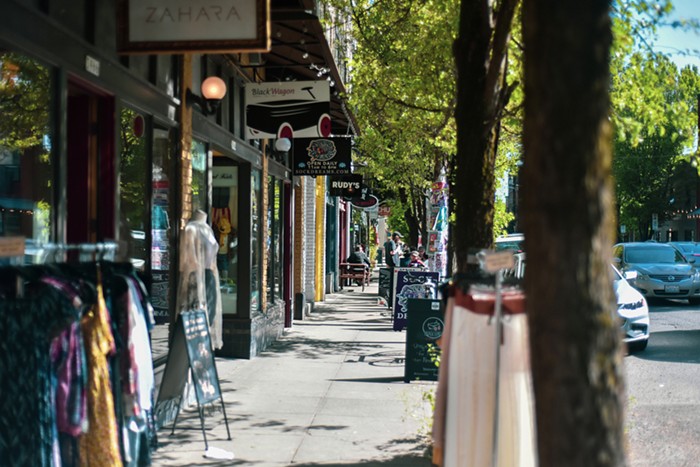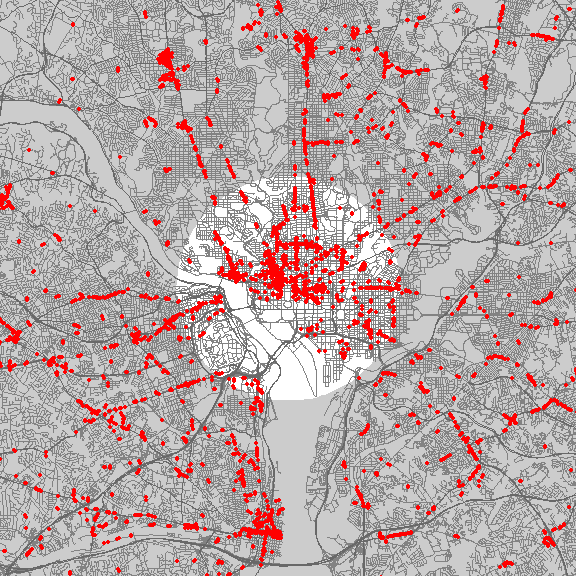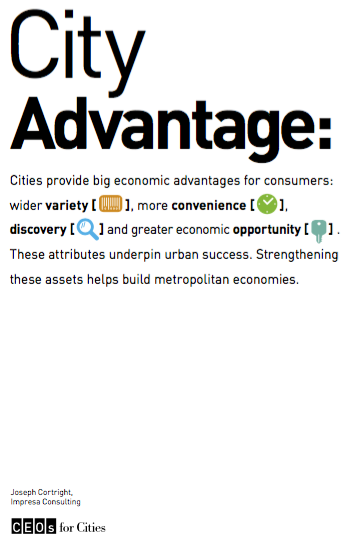Great cities, especially ones with dense, walkable mixed use neighborhoods are an economic boon to households because they save the precious commodity of time

Labor-saving devices and economic welfare
Stories of economic progress appropriately revolve around major technological breakthroughs. There’s little question that the advent of steam, the harnessing of electricity, and the development of digital microelectronics have helped propel economic growth. But to many humans, the biggest gains in well-being have come from inventions that save us from the drudgery of time-consuming daily tasks.
Simple things that we now take for granted, like piped domestic water, indoor plumbing, refrigerators, central heating, washing machines, vacuum cleaners, and automatic dishwashers save the typical household countless hours of mind-numbing and back-breaking labor, freeing our time for other pursuits (like checking our Instagram feed).
Some of the most important technologies in improving our personal well-being have come from some of the most seemingly prosaic household inventions. As the Washington Post’s Anna Swanson writes:
These technologies were so disruptive because they massively reduced the time spent on housework. The number of hours that people spent per week preparing meals, doing laundry and cleaning fell from 58 in 1900 to only 18 hours in 1970, and it has declined further since then. That change has made it possible for Americans to spend much more time at leisure and at work — specifically for women, who were responsible for almost all housework, to get jobs and become economically independent. Just 100 years ago, most married women were working at home. Now, about 57 percent of working age women are in the labor force.
Perhaps the reason they are so little heralded, by comparison to say microelectronics, is that these inventions saved the time and reduced the work of women. A good case can be made that this collection of household technologies played a key role in advancing the feminist agenda–although clearly a Jevons paradox of rising expectations of domestic perfection also accompanied home automation.
The city as labor saving device
In theory, new technologies are advancing the progress in domestic time-saving: the Roomba is a decided advance on the Hoover. But almost unnoticed, there’s another technology, all around us, that is a critical labor-saving device: the city. We don’t think of it that way, but a city or a great urban neighborhood is a crucial means for households to economize on the one resource, that regardless of income they can’t get more of: time.
As I argued in my 2007 study for CEOs for Cities: City Advantage, among the critical economic advantages of cities are convenience and variety: more consumption opportunities of all kinds are readily available close at hand, and the density and diversity of choices reduces the time and effort consumers need to find and get just the goods and services they most desire. In effect, a great urban environment functions as a labor-saving device for its residents.
This key economic attribute of cities is either completely ignored or greatly discounted in most common analyses of cities. Comparisons focus on easily gathered, but greatly misleading comparisons of, for example, average rents, and ignore the fact that in some cities (especially those with cheap rents), there are few consumption choices nearby.
Our work at City Observatory maps out the evidence for these critical variations in labor-saving proximity in different cities and different city neighborhoods. Our analysis of the connections between home values and walkability shows that homes proximate to a greater concentration of common destinations (schools, parks, restaurants, bars, coffee shops, and grocery stores) command higher prices than otherwise similar homes in areas with less access to these destinations. Our Storefront Index shows the concentration of walkable destinations in commercial districts in cities, and corresponds closely to those places that offer residents high levels of convenient, time-efficient consumption opportunities.

In contrast to sprawling suburbs or rural areas, where residents have to routinely drive long distances to reach common destinations, whether buying a gallon of milk, getting a haircut, drinking a latte, or getting a slice of pizza, all of those destinations might just be a block or two away in a dense urban environment (and not much further in many city neighborhoods). In addition to the convenience of shorter trips, urban residents typically have a much wider range of choices close at hand, another value of cities that is generally overlooked.
As we’ve documented in our studies of the Young and Restless, and as other research has shown, well-educated young adults are increasingly moving to dense urban neighborhoods. A key motivation for choosing cities, despite the higher rents that one generally pays, is that cities offer unique advantages in saving time in getting the things you want. Especially when it comes to services and experiences, cities have a powerful competitive advantage over other locations: For physical stuff, Amazon Prime may offer next day delivery wherever you live; but for the restaurant meal, mixed, drink, hair styling, back massage, or child care you want today, you can get it faster and more easily in a city than anywhere else.

